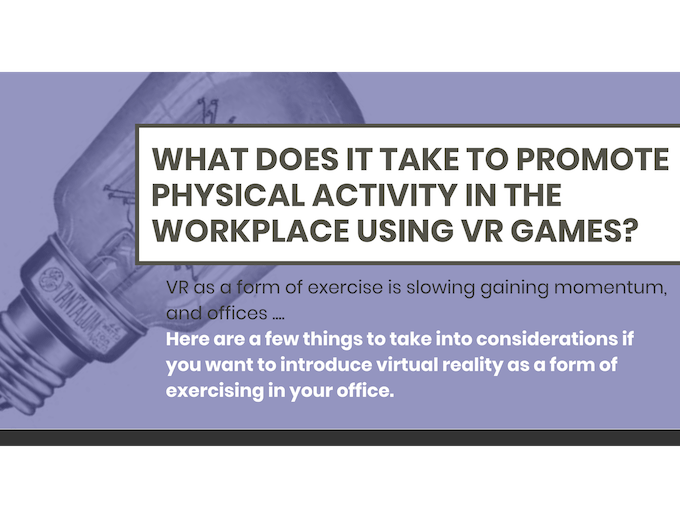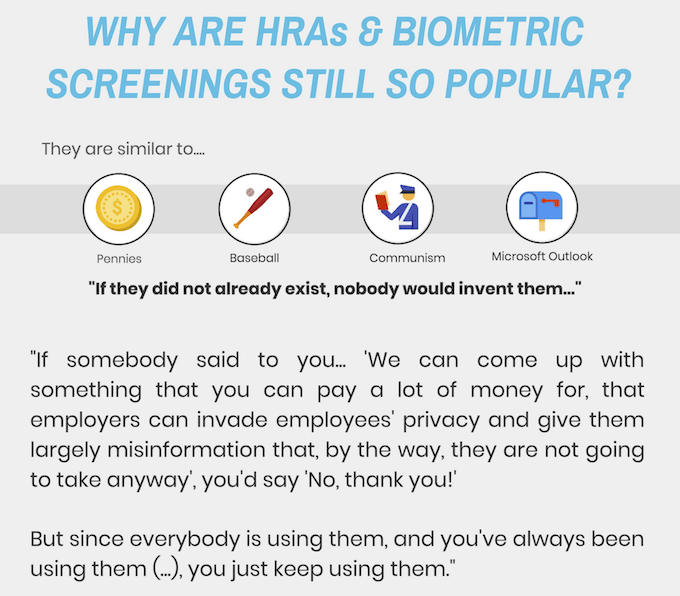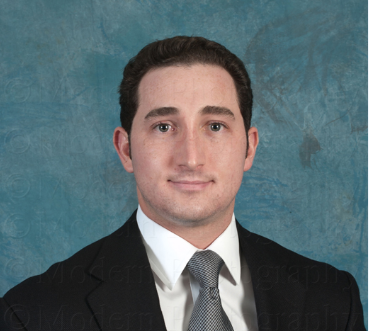Despite offering the greatest benefits to the most unhealthy employees, a study published in the National Bureau of Economic Research found that individuals in the middle of the healthcare spending range were the most likely to participate in employee wellness programs. The lead researchers of the highly publicized Illinois Workplace Wellness Study joined Wellable to talk more about what the study results mean and how employers can use the information to optimize their current offerings. The podcast covers program design, incentive structure, best practices, and also the direction of future studies on the topic. Enjoy!
There are two versions of the podcast. Check out the shortened version (27 minutes) for a quick overview of the study’s results or listen to the full version 40 minutes for behind-the-scene access to how the program was designed.
Listen to the podcast below in your browser, or open it on SoundCloud to listen on-the-go!
Shorterned Version
Full Version
Quick Stats From The Program
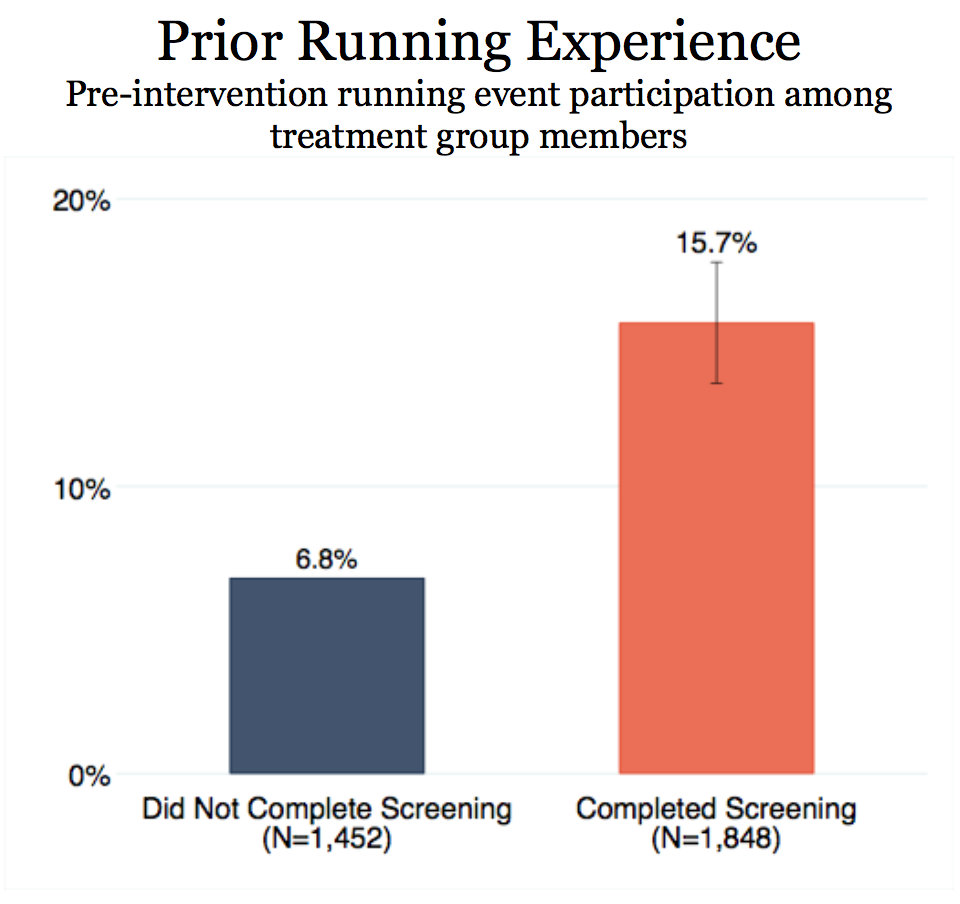 |
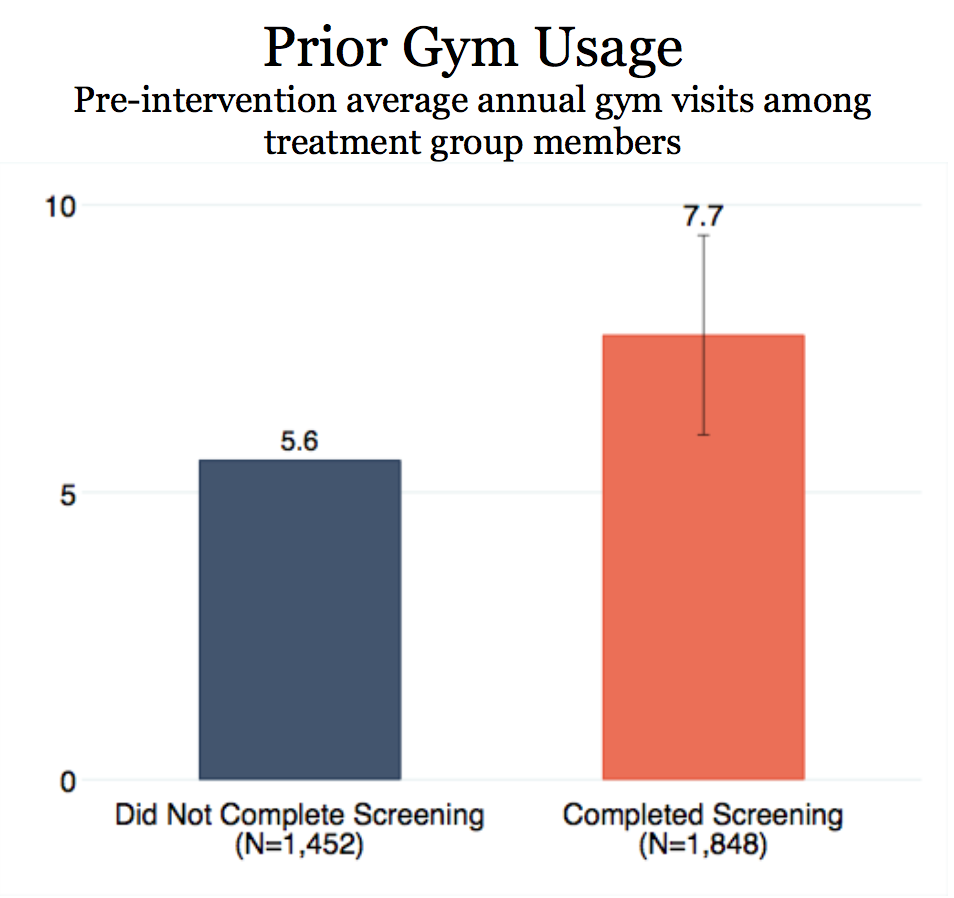 |
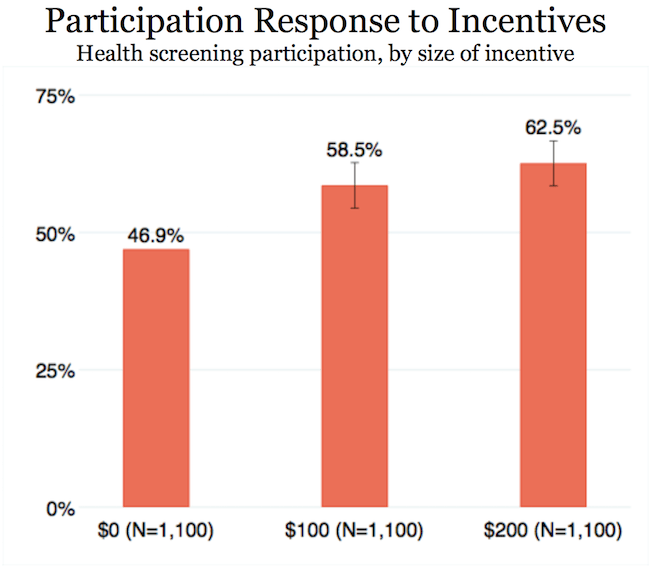 |
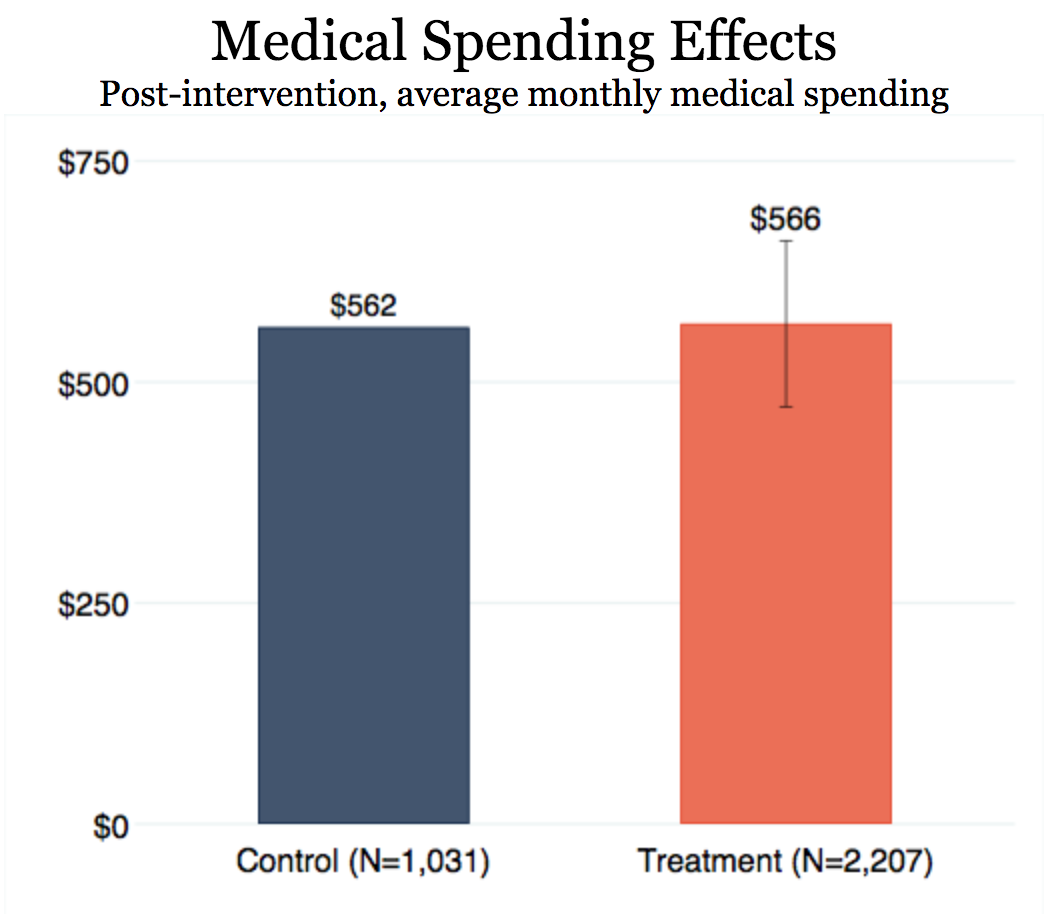 |
Transcript
0:00:00
Nick: Hey everyone and welcome to the Wellable podcast, series focused on building better cultures and more productive workforces. Whether you’re an employee wellness and engagement expert or a novice you’re in the right place. I’m your host Nick Patel, and Wellable is your one-stop-shop to stay informed and up-to-date on trends and data in the employee wellness and engagement industry. Before we get started, be sure to connect with us and join the conversation on Twitter. Our handle is @GetWellable. Also, I’d love to hear more from you. So, shoot me an email at nickatwellabledotco and let me know what you think of our show, and topics you want to discuss in future episodes.
We have a great episode in store for you today. This is a particularly special episode. Because it’ll be the first time we’re hosting multiple guests. Today we have three lead researchers from the acclaimed and widely publicized Illinois Workplace Wellness study. Dr. Julian Reif, David Molitor, and Damon Jones. Welcome to the show. Before we get started key please tell our listeners a little bit about yourself.
Julian: Thanks for having us today. My name is Julian Reif. I received my PhD in Economics from the University of Chicago, and currently am an assistant professor of Finance and Economics at the University of Illinois Gies College of Business. My research investigates the effectiveness of social insurance programs, and the value of health and longevity.
0:01:30
David: This is David Molitor. I am an assistant professor of Finance and Economics at the University of Illinois Gies College of Business. I received my PhD in Economics from the Massachusetts Institute of Technology, and my research explores factors that shape health and healthcare delivery in the United States.
Damon: And I’m Damon Jones. I’m a faculty member at the Harris School of Public Policy at the University of Chicago. I studied Economics and got my graduate degree at UC Berkeley, and my research focuses on the effects of public policy on people’s decisions and their well-being including tax policy, retirement, and in this case, health policy.
Nick: Great, thanks for the introductions. So, before we dive into the nature of the study and the findings you discovered, I want to take step back and talk about a little bit about your past and you know why did you study workplace wellness, if someone looks at your backgrounds all three of you are PhD’s in Economics. Of all the various things you could study, why choose workplace wellness?
David: I first became interested in workplace wellness, when I was a postdoc. I was participating in the wellness program at that university, and I became interested in what the effects of this program were on myself and others, and so I met with the program directors to talk about the program, and they showed me data on how much less in health care the university spent on employees who participated in the program relative to employees who did not participate in the program. But, it wasn’t clear to me if based on those results if the program was making these participants healthier or maybe they were just healthy to begin with. Maybe they were going to the gym, maybe they already went to the gym and were happy to get paid for doing the activities they already enjoyed.
Damon: Incidentally, I was a postdoc at the same University. So, I had also participated in that wellness program. I was one of those people that was already going to the gym, but then signed up for the wellness program, because “why not?” I had similar interest to David. The other thing that led us to study this program is in general, you know we’re interested in knowing what determines health care costs, and well-being and you know we’re interested to find out if there are ways to affect those outcomes.
Nick: Great. So, it sounds like both of you had prior experience as participants in a program. But what about from an academic perspective? Did you have any prior experience studying the field and if so how did that previous experience impact or influence, what you expected to discover as you embarked on the research project?
0:04:30
Damon: Prior to this study, we had not evaluated wellness programs directly. But, we were aware of the previous literature. So, we had you know explored the literature some, and the other thing is, that some of us so mean for example I had prior experience running field experiments. So, that was gonna be helpful in this setting, but there was still a lot to learn about how to do an experiment that involves a wellness program. And so, we definitely made sure to build a team of people with expertise in this area. And so, for example we teamed up with some experts at the University of Illinois, such as Laura Payne and Michele Guerra and Lauren Geary. These are members of our team, who have experience in sort of public health area, and in particularly with wellness. And they definitely helped to inform how we would design the study and the Wellness Program that we were ultimately going to offer.
Nick: So Julian, while David and Damon talked about having experience in previous wellness programs, I don’t think you mentioned that you have a similar one. That being said, do you have any expectation going into the project? And if so, why?
Julian: So, we did not have any strong expectations going into this research project. There were many prior studies on workplace wellness. Some finding strong effects, some finding little or no effects. But most these prior studies are observational. So, that that is they draw their conclusions by comparing participants to non-participants. And that’s not very appealing, because the types of individuals who decide to participate in a wellness program are different from individuals who don’t participate. So, if you find that participants have for example lower healthcare costs than non-participants, it’s difficult to say whether this is actually a result of the wellness program or whether this happens because those individuals already had low health care cost to begin with.
Nick: Great. and so, in terms of the observational studies, what else about your study relative to the previous studies was maybe structurally different? So, I know as Damon mentioned you all reviewed previous studies and things like that you begin to launch or structure of this program or this study. Is there anything specifically you wanted to maybe address, whether it’s round size or specific ways for capturing data?
David: So, there were three characteristics that kind of distinguish our study. The first is that it’s very large, in scale. So, our employer has over 12,000 employees. They span faculty, administrative, and union service positions. So, we’re able to analyze the effects of a program on such a diverse workforce.
The second is that our program and our study was, it was very comprehensive. So, the wellness program that we offered, was designed to include all major components of a typical wellness program, and was also paired with financial incentives to encourage participation. It’s also comprehensive in the types of data we collected. We collected administrative data on healthcare spending and an employment productivity variable. We also have survey data on self-reported health and health status, and health risks, and we have biometric data on participant outcomes.
And the third characteristic that distinguishes our study is, that and maybe the most important is that it is a randomized control trial. So, this is very important because rather than comparing participants to non-participants, we are able to compare outcomes among employees who are randomly assigned to be eligible for the wellness program, to a control group that was not eligible to participate.
0:08:30
Damon: One thing that I will add is that another concern in general, when you’re looking at studies research studies, is that there could be what’s called publication bias. Which is that the only studies you see are the studies that have a particular kind of result. And so, one thing we did with that respect was to pre-register our study. So, before we even began a study, we posted in a publicly available manner, details about our study, the outcomes we would measure and basically the questions we would ask. And so, then once we get the results when you pre-register your study, it makes it harder for you to you know to ignore certain outcomes or to only cherry-pick certain results. And so, we also use this pre-registration process to add to credibility.
Nick: Great. So, it sounds like you guys were using one employer. Was there a specific reason why you chose one employer how is that employer chosen? And were there any specific elements about the structuring of the program in terms of the number of participants, how they are broken out to various groups, and things like that that would be helpful for us people interpreting the result to know?
Damon: The primary reason why we chose one employer was that – that would make this study manageable. We had to find a willing partner that would allow us to basically conduct the experiment, and you know assign people to different groups. And so, we found a partner in University of Illinoi, that was allow that was interested in finding out more about wellness programs. In part due to just the constraints on our you know capabilities, we decided to go with one employer. Luckily, they are a large employer, and so, that gives us also at least a sizeable population to work with.
In terms of the design of the study, this is a multi-year and ongoing study. And we essentially invited all employees on campus to participate in the study. That includes just about 12,500 employees. Out of that group just under five thousand so, about 4,800 people entered into this study. And in order to enter the study, you had to consent to the study and take a baseline survey. At that point we then split up the sample into a control group of about 1,500 people, and they were not able to participate in any of the wellness program activities. So, this is our comparison group.
The other members of the study were assigned to the treatment group, and we did this randomly. So, that the two groups would be roughly identical in their characteristics. The treatment group was invited to participate in a wellness program that we created called “iThrive” the iThrive program included a number of components including, an initial screening and health risk assessment. And then after completing that, given the information that you receive as a result the participants were then invited to participate in what we call wellness activities. So, this included an instructional course for managing chronic diseases, maybe a smoking cessation program, a course that focused on healthy living, a Tai Chi class or an exercise class. And so, they had a menu of choices. They could choose one wellness activity per semester, for up to two. Within a treatment group we assigned them to six different groups, and the difference between those groups, was the level of financial rewards that were offered. And that ranged from five hundred to three hundred and fifty dollars.
People were notified of the rewards, that they could receive at the beginning of the study. And then one year later, we conducted a follow-up survey and we also collected biometric data from those who participated. We communicated with the participants via email and postcards for the invitation, and then subsequently we gave them email reminders, and they also had a website, which was a portal that they could log in to track their progress, remind themselves of the incentives they might win or receive. And then they were also given links to sign up for the different stages of the program.
Julian: It turns out that the University of Illinois is really an excellent setting to study this topic, because prior to our study, the University had only very limited wellness offerings available on campus. So, what that means is, that when we evaluate the effects of the workplace wellness program that we designed, we are basically evaluating the entire effect of introducing a new comprehensive workplace wellness program.
0:13:30
Nick: So, in terms of the programming; I know, Damon, you mentioned, there are courses were those online courses? Or were those on-site classrooms physically the people went to, depending on the topic?
Damon: So, some were in person, the Tai Chi class or the recreational class, there were in-person courses for chronic disease management and healthy living. there were also some remote options, these included a self-paced walking challenge, and then the smoking cessation program was also basically, it was implemented via a hotline. So, that was a telephone-based intervention.
Nick: So from what I am hearing, it seems like there were a number of elements to the program, is that correct? Can you guys talk a little bit more about the elements in the different parts of the program and how they fit into the larger puzzle?
David: There were three types of activities or three components. Three main components of the workplace wellness study. So, the first component was a biometric screening. This was an in-person health screening given by a clinician. These screenings were offered on campus at a variety of locations over a five-week period, to make it very convenient for employees who were invited to show up and get a health screening. So, the screening would measure height, weight, waist circumference, and it also involved a finger stick measure of cholesterol, blood sugar and triglycerides. And so, this gave participants a measure of their physical health. Now the biometric screening was followed by a second component of the study, which was an online health risk assessment. So, this would ask questions a survey of lifestyle to help in combination with the biometric outcomes to assess an individual’s health risks.
Then based on this health risk assessment, employees were given recommendations for the health risks that they faced, and steps they might to reduce those risks. And to help them reduce the risks we offered these wellness activities in the fall and again in the spring, and participants could participate in one of a variety of classes, that Damon mentioned. Now tied to these components were incentives or rewards for completing these activities. So, individuals who completed their biometric screening and online health risk assessment, might receive an incentive for completing that step. Also, for completing a fall activity or a spring activity, they would receive an additional incentive. So, we were able to measure what fraction of people completed these activities and how that completion rate varied by incentive.
Nick: So it sounds like the program was tracking a lot of biometrics and other pieces of health data, but what about day-to-day activities such as standing up, walking around. Were those tracked?
David: We tracked activities that were occurring outside of our study as well. The two main activities that we tracked was whether or not individuals in our study were going to the gym and whether they were participating in a popular running event that occurs each spring in Champaign Urbana. And this is important because, this allows us to look and see whether our wellness program is affecting behavior that’s occurring outside of the program itself.
0:17:00
Nick: So, David I remember reading in the abstract at the research report you know defining the wellness program that you constructed as being comprehensive. As you tried design that comprehensive program obviously a number of elements from the biometric screenings, to the health assessment, to follow up activities, how do you actually go about designing what to include? At what point did you say we want to include a screening or not include screenings etc.?
David: Yeah. So, our goal was to design a program that would be representative of gold standard wellness programs, that are offered in workplaces, around the country. And so, one of the main ways that we decided the components to include in our comprehensive program was to consult with wellness experts. And this is where our team was very valuable. So, we had a wellness expert Michele Guerra, who helped design this program. We also use information from surveys of common workplace wellness programs to make sure that our program had all the major components.
it’s also becoming increasingly common to include financial incentives to encourage behavior. So, in addition to having biometric screening, health risk assessment and wellness activities going throughout the year, we also included these financial incentives or these rewards for completing activities to encourage participation.
Nick: Great. So, I’m sure what most of listeners want to hear about are the key takeaways and findings from the research. But, one of the things I’ve always kind of realized is that if you’re talking you know to an HR professional and just putting yourselves in their seat or in their shoes, they often come to these rough-and-tumble numbers for measuring the success of their program or thinking about whether they want to launch a program. And so, as an academic, I can see that your research paper is going to think a little bit more critically about it. But, before we get into those specific findings, Julian I would love to know from you. You know, just if you’re an HR person you’re thinking okay they create this comprehensive program, what was the engagement rate of the people who were eligible to being part of the treatment group? So, how many percentage participated? That’s a quick number that employers often think about. They often think about- well, if we don’t have a program and we want to create something similar to this comprehensive program that you created. I know Damon and David mentioned the reward budgets, and how they’re different for each group. But you know what is the administrative cost? So, I have to do biometric screenings to all the employees have a health risk assessment, support these classes and courses. Can you kind of give us a sense of what the engagement was and what the investment was into the program, before we dive into the actual findings from the research?
0:20:00
Julian: Yes. So, we had excellent turnout in our program. If you look among those who were assigned to the treatment group, that is those who are eligible to participate in the workplace wellness program that we designed. 56% went on to complete both a biometric health screening and a health risk assessment. 27% also completed a wellness activity in the fall, and 22% completed a wellness activity in the spring. So, overall these participation rates compare quite favorably with what we often see reported in the literature. Now in terms of the costs there were two main components. So, first as David just described, there are the rewards that individuals received for completing various steps of the program.
So, these rewards were randomized at the beginning of our study and depending on which group the participant was in, she could receive either $0 or $100 or $200 for completing the health screening and the health risk assessment. If she completed both of those, she was then eligible to sign up for wellness activities in the fall and again in the spring and depending on which group she was randomized into. She received either $25 or $75 for completing a fall wellness activity and again 25 or 75 dollars for completing a spring wellness activity.
The second main cost were the programmatic cost, and it cost us about $80 person to provide both a health screening and a health risk assessment. The cost of providing the wellness activities of course depended on the particular class that people signed up for, but on average those classes cost us about $25 per person. So, if you look across everybody who participated in at least one component of our workplace wellness program, our total costs came out to $271 per person, including both the rewards and the programming costs. Whether that is a lot or a little money depends of course on the benefits at our workplace wellness program generated for employees and the employer.
Nick: Great. So, at the now we’re to the point about to complete this research project you structured this comprehensive wellness program and you have all this data, as you went through your analysis, you know for those individuals that haven’t gone through the full report there’s just tons of information. It would take you know multiple podcasts to go through everything. So, I think what I would like to hear is kind of what are the three-big takeaway. So, if you’re an employer or broker, an individual interested in wellness programming or employee health. What are the three big takeaways from the study, that they should think about as they apply your findings to the real world?
Julian: One of our big takeaways comes about from our comparison of participants to non-participants. So, we compared these two groups across a number of different dimensions and found many differences.
Now first those who participated in the program had significantly lower pre-existing health care costs. If you looked at their spending in the previous year, that is the year prior to the beginning of our workplace wellness program, participants healthcare costs were about $1,200 less than non-participants. So, that corresponds to about a 20% difference in spending, which is very significant.
We also found that people who participated in our program had visited the gym about 40% more in previous years than non-participants, and were more than twice as likely to have participated in local community running events. And also participants in our program were less likely to come from the bottom quartile the salary distribution of the university. I were less likely to be smokers than non-participants. And there were several other differences as well, but in general the overall pattern that we found was that compared to non-participants. The participants in our program already had low healthcare costs, already were participating in healthy activities, were less likely to be in the bottom of the income distributions and were much less likely to be smokers.
Nick: Damon, what about you? What findings did you find most interesting?
0:24:00
Damon: We also looked at the effects of different levels of rewards or incentives. And so, we have some interesting results there as well. I’ll start with so there were two types of incentives. We gave an incentive to people for beginning the wellness program, that is successfully completing the biometric screening and the health risk assessment, and then we gave incentives for basically the second stage or completing the wellness activities. So, with the screening incentive we offer three levels. 0, 100, and 200 dollars for completing the screening and risk assessment. And what we found here was that in general giving people a higher incentive did lead to more participation, but this only worked up into a point. So, for example when we went from zero to $100 the screening completion rate went from 47% to 59%, but when we went from $100 to $200 we only saw an additional increase to 63%. So, there wasn’t as nearly as much of a boost for that second increase. That was one of our first results is that the incentives work, but their effect tapers off. The second thing we found was that, you know we had two types of incentives one was tied to what you do right at the beginning, and the other was tied to what you would do subsequently later on when he completed the wellness activities.
The participants knew about both of these types of rewards when they began the program, and what we found where was that both of these incentives the front end or sort of the back loaded incentive, they both had a similar effect per dollar in terms of increasing entry into the program, affecting whether or not you complete the first part the screening. But those incentives that were tied to wellness activities additionally were more effective at making sure that people completed the second stage of the program. Completing the wellness activities. So, we saw a little bit of a different effect on the back end, depending on what whether the incentive was front-loaded or back-loaded.
Nick: So what about the “King metric”, the ROI. Did you find anything there?
David: So, that across a variety of outcomes that we examined, we looked at almost 40 outcomes across most of these outcomes, there was no difference after one year in those outcomes between the treatment group and the control group. Meaning that the program did not have any impact on these outcomes in the first year. So, the first and maybe that one of the most important outcomes we looked at was health care spending. So, we looked at the total amount that individuals spent on health care over the course of the first year of the program, and that amount was among employees in the treatment group they spent on average $566 a month on healthcare. Employees in the control group, spent $562 a month on healthcare.
So, they’re just essentially no difference in health care spending. No reduction in health spending as a result of our program. I’ll also note though that our program did not increase healthcare spending. If you tell people, if you give them information about their health and they find out that they are actually less healthy than they thought they were, it’s plausible that wellness programs increase spending in the first year and we didn’t observe that that either. So, we just observed no difference in health care spending after one year. We also observed no difference in the rate at which employees reported in sick to their employer. So, no change in there’s no difference in absenteeism rates between the treatment group and the control group. And we asked a variety of questions after one year we had a survey, where we asked employees questions like “are you trying to increase your physical activity?” And a variety of other questions about their health. And we observed no difference across any of those with two exceptions.
The first is that after one year employees in the treatment group were more likely to report that they had ever had a health screening. So, this is important because one of the important functions of a wellness program is to provide health screenings, and it’s possible that maybe the only people getting health screenings are people who had it. Who would have gotten one anyway. But the results of our studies suggest that’s not the case, that the wellness program increased rates of health screening, which potentially in the longer run could result in medical cost savings that don’t show up in the first year.
The second thing that we found was that employees in the treatment group were much more likely to report that their employer values the health and safety of their workers. So, if you’re in an HR department and you’re trying to design a program, that helps the employees to know that their employer cares about their health, it appears that wellness programs can be an effective way to do that. But, overall the fact that we observed no difference in health care spending or absenteeism rights between the treatment and control groups, suggests that if companies are looking for a financial return on investment, it’s unlikely to occur in the first year. Now it’s possible that some of those show up in the long run. So, we also looked at some outcomes that can change more quickly than health care spending, specifically health behaviors. So, we were able to look at how often people go to the gym or whether or not they participated in this popular community running event, which is popular for people in our area, to participate in when they’re trying to get in shape. But we observe no difference in those health behaviors between individuals in the treatment group and the control group.
Nick: So if you’re saying that there’s no observable financial ROI, why should employers want to run an employee wellness program?
0:31:00
Julian: Well there are maybe two answers. One is that it may take longer for the benefits to occur, and maybe the benefits just don’t occur in one year. And then it becomes a question of how patient is an employer how long are they willing to wait until the benefits show up, because they pay the costs upfront. But there’s another potential benefit of wellness programs, and this is that when employers decide which benefits to offer their employees, it may change the types of workers that want to work at that employer. So, if you offer a benefit, a workplace wellness program, that is attractive to healthier employees, that may help you to recruit or retain employees that are healthier. So, even if the program itself is not changing health behaviors or health care costs, it’s possible that a wellness program could result in savings for a firm. If it changes the composition of who is working at the firm.
Nick: Great. Did you as part of the studies so going back to this concept of a comprehensive wellness program, that’s multifaceted in terms of the various elements that individuals can participate in? Did you look at or maybe even or thinking about looking at are there specific elements that are maybe more helpful than the other? So, you know number of different factors go into improving healthy behaviors, potentially some of those could have if I’m understanding you correctly. So, maybe long term financial benefits but in the short term none were really seen, but some you know healthy behaviors to certainly be improved or your specific elements of that program, whether it’s to buy mental screening, the health risk assessment, the smoking cessation course or something else, that you felt could have a different impact also lowers an amount investment you needn’t tip program. So, if you’re you know theme from a practical perspective you’re an employer you see this great program comprehensive program that you put together as part of the study. You want to replicate something but you know budget is a requirement obviously. So, you decide you may want to invest in one or two pieces of it, this initially is there any piece of your study highlight parts of these programs may be more effective or less effective?
Damon: What we did find was that there were different outcomes depending on the type of incentive and the size of incentive used. So, the first thing as we mentioned before is that when we went from $100 to $200 in screening incentive we didn’t see that much of an increase in participation. So, right there if you’re thinking about offering a wellness program such as this you might be able to save some money by scaling back those rewards somewhat, without losing much in the way of participation. We also found that you know we had an incentive that was tied to the front end of the program participating in the screening and we had incentives that were tied to sort of the back end of the program, completing the wellness activities.
And what we found is that those back-end incentives are potentially more cost effective. Both incentives encouraged people to begin the program and do the screening, but the incentives that were tied to sort of the back-end activities they were more effective in getting people to complete that secondary the second stage of the program. An important thing to note is that you had to complete the screening in order to continue on to those subsequent activities. And so, that probably played a role as well.
The final thing is thinking about what type of worker is attracted by the different types of incentives, and what we found was that in terms of the incentives tied to the screening as we increase those incentives, they initially seem to draw in the healthier employees, the employees who have sort of lower monthly spending on healthcare. On the other hand, when we look at the activity incentives, so those incentives that were tied to the back end of the program, as we increase those incentives they initially seem to attract above average spenders or employees who have below average health in terms of their healthy behaviors. And so, you’re attracting a different type of employee depending on what type of incentive you’re using.
Nick: As I see you a good segue in terms of how you want to wrap up the podcast here we’re going to talk about next steps. I think Damon you may have mentioned that this is you know the one-year study but it’s still going on. So, I want to think about what that looks in the future and I know you’ve just talked about the type of person who may be attracted to work for a company because of these wellness benefits. I remember David mentioning that there could be some extraction of kind of value from that from an employer’s perspective. And I know you’re mentioning how it’s a little bit less precise today. What’s the next steps or is this study it sounds like the program is still going on, and if so where do you continue study, what are you looking to find? And then in terms of where seems to be an area value around attracting a certain type of employee, is there specific things you’re doing to research that and make it, you know quote more precise?
David: Yeah. So, our study answers a number of important questions, but it also leaves a lot of questions unanswered, and some of those questions are ones that we will be looking at as part of the ongoing nature of our study. So, the first thing is we’ve talked a lot today about this biometric screening, which was part of our study. We ran a biometric screening at baseline as part of informing employees about their health, but we also repeated the biometric screening after one year. So, that we can look at whether the program had any impact on biometric health outcomes. So, even though we’re not observing any changes in health care spending, maybe we are going to see some changes in the health of participants that might be a precursor to long-run savings. So, those results will be forthcoming so stay tuned.
The second thing we’re going to be looking at which is closely related to that is, whether there are any long-run effects of the program. So, it’s notoriously difficult to move the needle on health care spending, workplace wellness has been touted as one way to reduce healthcare spending, but maybe it takes longer than a year. And so, we will be running this study and tracking outcomes until 2020, so, we’ll be able to look at not only the short run impact, which is what we’ve looked at so far. But we’ll also be able to look at whether there’s any long-run impact on health spending productivity and a variety of other outcomes, that we’re measuring as part of the study.
0:38:00
Julian: Another follow-up paper that we are working on delves a little bit deeper into the determinants of the program participation. So, as we talked about earlier, we had excellent turnout in our program with over half of eligible people choosing to participate in at least one of our programs major components. So, as part of our ongoing research, we want to understand whether peer effects may be driving some of this participation. In other words is a participant more likely to show up for health screening or it’s a complete a wellness activity, if one of her co-workers also shows up. You might expect this to be the case for example people prefer taking classes with people they know. In our surveys we have asked the participants in our study to list some of their co-workers with whom the interacts closely.
So, with our data we will actually be able to measure this effect, what to look at are you more likely to show up for different parts of our program, along with your fellow co-workers. our results so far are very preliminary, but so far it appears that peer effects may indeed have played at least some role in boosting the participation in our program.
Damon: I would also add that we are also interested in asking whether there are certain subgroups that might benefit from this type of intervention more than others. And so for example we did find that people were more likely to say that they had received a screening if they were in a treatment group. And this could be valuable for people who have previously undetected chronic conditions. So, we’re also going to do some analysis to see if for that subgroup you find a different set of effects or outcomes.
Nick: So, lots of interesting papers and research coming out shortly. I know my limited knowledge academic research they have to go through, maybe some type of approval process and publishing time, when can someone like me or someone else be able to see some or all these results that you’re mentioning now?
David: Well, one of the best ways for people to keep up with the results of our study is to visit our study web page where we will be posting results as they become available. We’ll also be posting links to the published studies. And our study website is at www.nber.org/workplacewellness so, we recommend people, visit that site and they can learn about the results we’ve talked about today, we have that paper and those results are already posted, and the forthcoming studies we’ve been talking about will be posted there as well.
Nick: Great. Well, thank you all for joining us and talking about your study. I definitely be staying in touch via your website, to see the updates and you once they’re published. We’d love to have you back and have another podcast and talk about those results.
Damon: Thanks for having us.
David + Julian: Yes, thank you very much.





